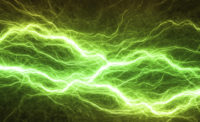Electrical accidents in the workplace can have horrific consequences. They can cause burns, shocks, electrocution and death. Electricity’s status as a serious workplace hazard has earned it two positions on OSHA’s top ten most-cited standards list for fiscal year 2015. Standard 1910.305, which covers wiring methods, was in the eighth spot. Standard 1910.3031, General requirements, was the tenth most-cited.
Employees like engineers, electricians, and other professionals who deal with electricity directly -- including working on overhead lines, cable harnesses, and circuit assemblies – are at obvious risk, but so are office staffers, sales people and others who work with electricity indirectly. The range of potentially exposed workers is reflected in the many different types of facilities that were cited for violations of 1910.303.
There were 2,044 citations related to the standard from 1,543 total inspections conducted by OSHA enforcement personnel. Total penalties attached to those citations: $3,229,475.
The manufacturing industry had 554 citations from 420 inspections, with $950,857 in penalties. A second tier of manufacturing earned 339 in citations from 245 inspections, resulting in $542,554 in fines. The public administration sector was cited for 169 violations – based on 127 inspections. OSHA reported that there were no penalties assessed from those citations.
Wholesale trade had 141 citations from 104 inspections, with $175,764 in penalties. A third tier of manufacturing logged 101 citations (75 inspections; $302,048 in penalties). A category known as “Other Services” had 99 citations (66; $100,280); retail trade accounted for 87 citations (73, $126,303) and transportation and warehousing had 82 (66, $191,923). Rounding out the list of industries who were cited most often for violations of 1910.303 are transportation and warehousing (82 citations; 66 inspections and $191,923 in penalties); administration and support and waste management and remediation services (77, 55, $104,577) and accommodation and food services (70 citations, 58 inspections and $104,577 in fines).
Permanent and conspicuous hazards
Standard 1910.303 applies to employers of all sizes and specifies general requirements for the examination, installation and use of equipment; working space distances; the guarding of live parts and the need for “permanent and conspicuous” warning signs, among other topics.1
A review of several recent OSHA enforcement actions shows the variety of industries that harbor electrical hazards. The Continental Construction Group in Lynn, Massachusetts was cited for exposing its employees to electric shock hazards from ungrounded electrical equipment and power cords. OSHA had previously cited the company for similar hazards – at a different worksite -- in 2012.
A cabinetmaker, BCS Manufacturing LLC of St. Louis, Missouri, was cited for allowing its employees to use damaged electrical equipment.
OSHA inspectors found that employees at PCC Stucturals-Groton, a Connecticut steel foundry, were exposed to live electrical parts and were misusing electrical equipment and power cords. The company failed to provide adequate working space around electrical panelboards and had an ungrounded extension cord in its facility.
Stand clear
Basic recommendations for electrical safety call for assuming that all overhead wires are energized at lethal voltages; avoiding contact with a fallen overhead power line; staying at least ten feet away from overhead wires during cleanup and other activities and surveying the work area for the presence of overhead wires when working at heights or handling long objects. In damp locations, electric cords and equipment should be inspected to ensure that they are in good condition and free of defects, and a ground-fault circuit interrupter (GFCI) should be used.2
1. www.osha.gov/pls/oshaweb/owadisp.show_DOCUMENT?p_table=STANDARDS&p_id=9880





